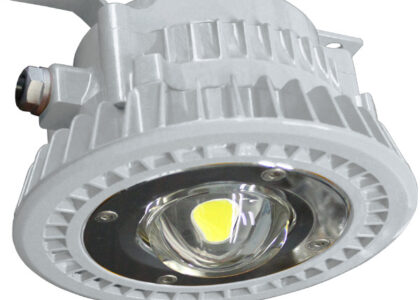The defense electronic market size is estimated to be worth US$ 178 billion in 2024. The demand for defense electronic is likely to rise at a CAGR of 5.8% through 2034. The industry is likely to surpass US$ 311.5 billion by 2034. The defense electronic industry is primarily propelled by the increasing global security concerns, marked by geopolitical tensions, terrorism threats, and territorial disputes. Governments are ramping up defense spending to modernize their armed forces, driving demand for advanced electronic systems.
The evolution of warfare tactics towards asymmetrical warfare and the growing emphasis on situational awareness and precision targeting contributes to the demand for sophisticated defense electronic solutions. The industry players face several challenges, including budget constraints, regulatory complexities, and geopolitical uncertainties. Governments often prioritize defense budget allocations based on competing domestic priorities, which can limit funding for defense electronics programs. Moreover, stringent export control regulations and compliance requirements hinder market expansion, particularly for international defense contracts.
One notable opportunity lies in the development of autonomous and unmanned systems, including drones, unmanned vehicles, and robotic platforms, which offer enhanced surveillance, reconnaissance, and combat capabilities. Furthermore, the increasing adoption of network-centric warfare concepts and the integration of cyber and space-based capabilities open new avenues for innovation and growth.
Request for a Sample of this Research Report: https://www.futuremarketinsights.com/reports/sample/rep-gb-18980
The latest trends in the defense electronic industry include the convergence of commercial and military technologies, fostering innovation and cost efficiencies. Additionally, a growing focus on sustainability and energy efficiency in defense electronics is driven by environmental concerns and regulatory pressures. Another notable trend is the shift towards open architecture systems, enabling interoperability, modularity, and faster technology refresh cycles.
“The growing demand for electronic warfare systems, including radar jammers, electronic countermeasure systems, and signal intelligence solutions, presents lucrative prospects for industry players.” Says Lead Analyst at FMI
Key Takeaways from the Defense Electronic Market
- The defense electronic industry in the United States is expected to rise steadily at a CAGR of 6.0% through 2034.
- The defense electronic industry in the United Kingdom is forecasted to expand at a CAGR of 7.0% through 2034.
- China’s defense electronic industry is poised for significant expansion with a projected CAGR of 6.4% through 2034.
- Japan’s defense electronic industry is likely to rise at a CAGR of 7.3% through 2034.
- The defense electronic industry in South Korea is projected to rise at a CAGR of 8.0% through 2034.
- The navigation, communication, and display segment are likely to rise at a CAGR of 5.6% through 2034.
- The airborne segment is likely to garner a stable CAGR of 5.4% through 2034.
Competitive Landscape of the Defense Electronic Market
Companies vie for dominance in the fiercely competitive defense electronic market by continuously innovating and adapting to evolving technological trends. Established players, bolstered by years of experience and extensive R&D investments, maintain a stronghold in the market, leveraging their expertise to deliver cutting-edge solutions to defense agencies worldwide. These industry giants often collaborate with government entities and military organizations to develop bespoke electronic systems tailored to specific defense requirements, further solidifying their market position.
The market also presents ample opportunities for emerging players and niche technology firms to carve out their niche. With advancements in digitalization, cybersecurity, and artificial intelligence reshaping the defense sector, smaller companies specializing in niche technologies find themselves in high demand. Their agility and ability to rapidly develop and deploy specialized solutions give them a competitive edge, allowing them to challenge established players and disrupt traditional markets.
Click to Buy Your Exclusive Report Immediately! https://www.futuremarketinsights.com/checkout/18980
Recent Developments in the Defense Electronic Market
- Curtiss-Wright Corporation cooperates with BAE Systems on the OMFV project, contributing to the MOSA design and supplying critical electronics and control systems for combat vehicles.
- Elbit Systems of America, a subsidiary of Elbit Systems Ltd., is an important participant in the OMFV initiative. They will provide its flexible 50mm Unmanned Turret (UT50), which recently showed effective live firing capabilities at the Aberdeen Test Center.
General Dynamics Ordnance and Tactical Systems is one step closer to being granted a sole-source contract to upgrade the Active Protection Systems (APS) on the United States Army’s Bradley Fighting Vehicles.
Key Companies in the Market
- Cobham Limited
- Bae Systems
- Curtiss-Wright Corporation
- Elbit Systems Ltd
- General Dynamics Corporation
Key Segments
By Vertical:
- Navigation, Communication, and Display
- C4ISR
- Electronic Warefare
- Radars
- Optronics
By Platforms:
- Airborne
- Marine
- Land
- Space
By Region:
- North America
- Latin America
- Europe
- East Asia
- South Asia
- Oceania
- Middle East and Africa
Author:
Sudip Saha is the managing director and co-founder at Future Market Insights, an award-winning market research and consulting firm. Sudip is committed to shaping the market research industry with credible solutions and constantly makes a buzz in the media with his thought leadership. His vast experience in market research and project management a consumer electronics will likely remain the leading end-use sector cross verticals in APAC, EMEA, and the Americas reflects his growth-oriented approach to clients.
He is a strong believer and proponent of innovation-based solutions, emphasizing customized solutions to meet one client’s requirements at a time. His foresightedness and visionary approach recently got him recognized as the ‘Global Icon in Business Consulting’ at the ET Inspiring Leaders Awards 2022.
About Future Market Insights (FMI)
Future Market Insights, Inc. (ESOMAR certified, recipient of the Stevie Award, and a member of the Greater New York Chamber of Commerce) offers profound insights into the driving factors that are boosting demand in the market. FMI stands as the leading global provider of market intelligence, advisory services, consulting, and events for the Packaging, Food and Beverage, Consumer Technology, Healthcare, Industrial, and Chemicals markets. With a vast team of over 400 analysts worldwide, FMI provides global, regional, and local expertise on diverse domains and industry trends across more than 110 countries.
Contact Us:
Future Market Insights Inc.
Christiana Corporate, 200 Continental Drive,
Suite 401, Newark, Delaware – 19713, USA
T: +1-845-579-5705
For Sales Enquiries: sales@futuremarketinsights.com
Website: https://www.futuremarketinsights.com
LinkedIn| Twitter| Blogs | YouTube





